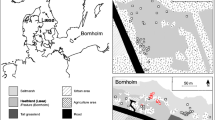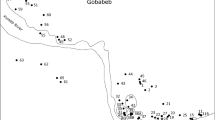Abstract
In populations of various ant species, many queens reproduce in the same nest (polygyny), and colony boundaries appear to be absent with individuals able to move freely between nests (unicoloniality). Such societies depart strongly from a simple family structure and pose a potential challenge to kin selection theory, because high queen number coupled with unrestricted gene flow among nests should result in levels of relatedness among nestmates close to zero. This study investigated the breeding system and genetic structure of a highly polygynous and largely unicolonial population of the wood ant Formica paralugubris. A microsatellite analysis revealed that nestmate workers, reproductive queens and reproductive males (the queens' mates) are all equally related to each other, with relatedness estimates centring around 0.14. This suggests that most of the queens and males reproducing in the study population had mated within or close to their natal nest, and that the queens did not disperse far after mating. We developed a theoretical model to investigate how the breeding system affects the relatedness structure of polygynous colonies. By combining the model and our empirical data, it was estimated that about 99.8% of the reproducing queens and males originated from within the nest, or from a nearby nest. This high rate of local mating and the rarity of long-distance dispersal maintain significant relatedness among nestmates, and contrast with the common view that unicoloniality is coupled with unrestricted gene flow among nests.
Similar content being viewed by others
Author information
Authors and Affiliations
Additional information
Received: 8 February 1999 / Received in revised form: 15 June 1999 / Accepted: 19 June 1999
Rights and permissions
About this article
Cite this article
Chapuisat, M., Keller, L. Extended family structure in the ant Formica paralugubris: the role of the breeding system. Behav Ecol Sociobiol 46, 405–412 (1999). https://doi.org/10.1007/s002650050636
Issue Date:
DOI: https://doi.org/10.1007/s002650050636




